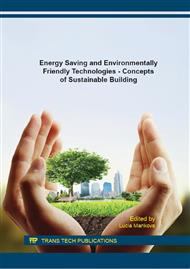p.363
p.371
p.379
p.387
p.395
p.403
p.411
p.421
p.429
Assessment of Energy Efficiency in Different Façade Solutions
Abstract:
One of the main objectives when designing a building must be perform an enclosure that properly insulate from the outside temperature. This façade must protect in the best possible way the inside of the building. In this work, different façade solutions are analyzed using different materials and constructive arrangements. However, most energy loss occurs in the singular points, e.g. the façade-slab connections or open holes in the enclosures. Therefore, the thermal performance of enclosures with different solutions is evaluated. This research provides an overview of the design of façades and singular points that helps to make responsible decisions in the building envelope design in various geographic locations.
Info:
Periodical:
Pages:
395-402
Citation:
Online since:
January 2016
Authors:
Price:
Сopyright:
© 2016 Trans Tech Publications Ltd. All Rights Reserved
Share:
Citation:


